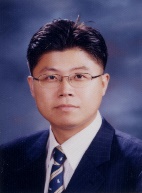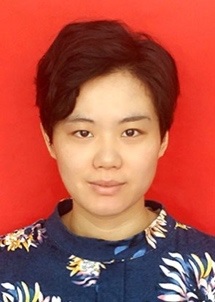Day 1 :
Keynote Forum
Liqiu “Rick†Wang
The University of Hong Kong, Hong Kong
Keynote: Small is Big: Bio-inspired and microfluidics-enabled structures for manipulating liquids
Time : 09:30-10:10

Biography:
Liqiu “Rick” Wang received his PhD from University of Alberta (Canada) and is currently a full professor in the Department of Mechanical Engineering, the University of Hong Kong. He is also the Qianren Scholar (Zhejiang) and serves as the Director and the Chief Scientist for the Laboratory for Nanofluids and Thermal Engineering, Zhejiang Institute of Research and Innovation (HKU-ZIRI), the University of Hong Kong. He has over 30 years of university experience in thermal & power engineering, energy & environment, transport phenomena, materials, nanotechnology, biotechnology, and applied mathematics in Canada, China/Hong Kong, Singapore and the USA, and 2 years of industrial experience in thermal engineering and technology management. He has secured over 70 projects funded by diverse funding agencies and industries including the Research Grants Council of Hong Kong, the National Science Foundation of China and the Ministry of Science and Technology of China, totaling > US$20m (excluding US$ 2.2 billion for AMS project). He has published 10 books/monographs and over 370 book chapters and technical articles, many of which have been widely used by researchers all over the world, and is ranked amongst the top 1% of most-cited scientists (ESI). He has also filed 22 patent applications and led an international team in developing a state-of-the-art thermal control system for the Alpha Magnetic Spectrometer (AMS) on the International Space Station. The AMS project is headed by Professor Samuel C C Ting (Nobel laureate in Physics, MIT, USA) and is to search for antimatter, dark matter and spectra of cosmic rays. He has presented over 50 invited plenary/keynote lectures at international conferences, and serves/served as the editor-in-chief for the Advances in Transport Phenomena, the editor for the Scientific Reports, the associate editor for the Current Nanoscience, the guest editor for the Journal of Heat Transfer, the Nanoscale Research Letters and the Advances in Mechanical Engineering, and serves on the editorial boards of 20 international journals. Liqiu “Rick” Wang received his PhD from University of Alberta (Canada) and is currently a full professor in the Department of Mechanical Engineering, the University of Hong Kong. He is also the Qianren Scholar (Zhejiang) and serves as the Director and the Chief Scientist for the Laboratory for Nanofluids and Thermal Engineering, Zhejiang Institute of Research and Innovation (HKU-ZIRI), the University of Hong Kong. He has over 30 years of university experience in thermal & power engineering, energy & environment, transport phenomena, materials, nanotechnology, biotechnology, and applied mathematics in Canada, China/Hong Kong, Singapore and the USA, and 2 years of industrial experience in thermal engineering and technology management. He has secured over 70 projects funded by diverse funding agencies and industries including the Research Grants Council of Hong Kong, the National Science Foundation of China and the Ministry of Science and Technology of China, totaling > US$20m (excluding US$ 2.2 billion for AMS project). He has published 10 books/monographs and over 370 book chapters and technical articles, many of which have been widely used by researchers all over the world, and is ranked amongst the top 1% of most-cited scientists (ESI). He has also filed 22 patent applications and led an international team in developing a state-of-the-art thermal control system for the Alpha Magnetic Spectrometer (AMS) on the International Space Station. The AMS project is headed by Professor Samuel C C Ting (Nobel laureate in Physics, MIT, USA) and is to search for antimatter, dark matter and spectra of cosmic rays. He has presented over 50 invited plenary/keynote lectures at international conferences, and serves/served as the editor-in-chief for the Advances in Transport Phenomena, the editor for the Scientific Reports, the associate editor for the Current Nanoscience, the guest editor for the Journal of Heat Transfer, the Nanoscale Research Letters and the Advances in Mechanical Engineering, and serves on the editorial boards of 20 international journals. Liqiu “Rick” Wang received his PhD from University of Alberta (Canada) and is currently a full professor in the Department of Mechanical Engineering, the University of Hong Kong. He is also the Qianren Scholar (Zhejiang) and serves as the Director and the Chief Scientist for the Laboratory for Nanofluids and Thermal Engineering, Zhejiang Institute of Research and Innovation (HKU-ZIRI), the University of Hong Kong. He has over 30 years of university experience in thermal & power engineering, energy & environment, transport phenomena, materials, nanotechnology, biotechnology, and applied mathematics in Canada, China/Hong Kong, Singapore and the USA, and 2 years of industrial experience in thermal engineering and technology management. He has secured over 70 projects funded by diverse funding agencies and industries including the Research Grants Council of Hong Kong, the National Science Foundation of China and the Ministry of Science and Technology of China, totaling > US$20m (excluding US$ 2.2 billion for AMS project). He has published 10 books/monographs and over 370 book chapters and technical articles, many of which have been widely used by researchers all over the world, and is ranked amongst the top 1% of most-cited scientists (ESI). He has also filed 22 patent applications and led an international team in developing a state-of-the-art thermal control system for the Alpha Magnetic Spectrometer (AMS) on the International Space Station. The AMS project is headed by Professor Samuel C C Ting (Nobel laureate in Physics, MIT, USA) and is to search for antimatter, dark matter and spectra of cosmic rays. He has presented over 50 invited plenary/keynote lectures at international conferences, and serves/served as the editor-in-chief for the Advances in Transport Phenomena, the editor for the Scientific Reports, the associate editor for the Current Nanoscience, the guest editor for the Journal of Heat Transfer, the Nanoscale Research Letters and the Advances in Mechanical Engineering, and serves on the editorial boards of 20 international journals.
Abstract:
Nature has always been our inspiration source of innovations. Chinese Kung Fu developed effective moves from hunting skills of powerful beasts like snakes, eagles, and tigers; airplanes mimic the skillful flight of birds; legged robots imitate legged animals such as dogs and spiders. Nowadays, state-of-the-art technology enables us to unveil mysteries of the microscopic world and thus invent at microscale with precision. We have been using the precision of microfluidics in manipulating liquids at nano-, pico-, femto- and even atto-liters and engineering nano-/micro- structures to mimic evolutionarily-optimized nano/microstructures in insects that interact with liquids, and thus developed a series of techniques for manipulating liquids precisely: water collecting, liquids repelling, and droplets manoeuvring. The breakthroughs have yielded three articles published in the prestigious journal Nature Communications in 2017. Unique structural and topological features of spider-silks and their web enable them being a super water collector witnessed by a large number of water droplets handing on them in the early morning. With the microfluidic technology, we have precisely fabricated robust microfibers with spindle cavity-knots and different topological fiber-networks in mimicking these features. These microfibers are endowed with unique surface roughness, mechanical strength, and long-term durability, thus enabling a super performance in collecting water. The maximum water volume collected on a single knot is almost 495 times the knot volume; the water collection is even more efficient and scalable with their networks. These light-weighted yet tough, low-cost microfibers offer promising opportunities for large-scale water collection in water-deficient areas. On a sunny summer day, beaches are full of joys: kids build sand castles; adults swim or surf waves. However, people have to suffer from getting clothes wet. Inspired by springtail cuticle, we have fabricated liquid-repellent surfaces that can eliminate this distressing situation. The fabrication technique is based on microfluidic-droplets templates, similar to the method for making shaped cookies using baking molds. The functional surfaces repel both water and oils attributed only to springtail-cuticle-mimicked nano/microstructures. The work offers deep insights of liquid-repelling structures and benefits our daily life significantly with applications of these super-liquids-repelling surfaces in various fields including clothes, cookers, and building walls where repelling liquid is relevant. Some semiaquatic insects can readily walk on water and climb up menisci slope due to the dense hair mat and retractable claws of complementary wettability on their tarsi. Inspired by this, we created a mechano-regulated surface whose adhesive force to liquid droplets can be simply switched through mechanical regulation. The mechano-regulated surface functions as a “magic hand” that can capture and release multiple tiny droplets precisely in a loss-free manner, and works for both water and oil droplets down to nano-litre scale. These surfaces are relevant and crucial in various high-precision fields such as medical diagnosis and drug discovery where the precise transferring of tiny liquid is a must. Learning from nature paves the way for creating nano/microstructures with unique features to interact with liquids on-demand. Small yet powerful, these structures can manipulate liquids of volume much larger than their dimensions effectively and precisely. With these techniques, water can be gathered directly from the air in deserts, clothes are never been wetted on rainy days, and liquids can be conveniently handled like solids.
Keynote Forum
Manfred George Krukemeyer
Paracelsus-Hospitals, Germany
Keynote: Nanotechnology in liver cancer
Time : 10:10-10:50

Biography:
Abstract:
Therapies of liver tumors display diverse treatment alternatives. The administration of cytostatics coupled with and without iron oxides (Fe3O4) has been presented in an experimental series with 36 animals with prior implantation of an R1H rhabdomyosarcoma in the liver, since iron undergoes selective phagocytosis in the liver. In Group I, mitoxantrone is injected into the lateral tail vein of the animals (n = 12) in a dosage of 1 mg/kg of body weight. Group III (n = 12 animals) received mitoxantrone coupled with iron oxide (Fe3O4), and Group II (n = 12 animals) received NaCl, in the same dosage for all groups. In the Sonography and in the measurement of the volume, a significantly smaller tumor growth is found in Group II compared with Group I and III. The volume was measured manually post mortally in mm3 (length × breadth × height). The tumor volume showed the lowest growth in Group II, which was treated with mitoxantrone-coupled iron oxides. Three animals from Group II died. The autopsy revealed no indication of the cause of death. There were neither thromboses nor allergic reactions in any of the animals. It can be clearly seen that Group I has a smaller mean volume and less scatter than Group II. The mean of Group I is also below that of Group II.
Keynote Forum
Sushanta K Mitra
Waterloo Institute for Nanotechnology, Canada
Keynote: Achieving dual phobic surfaces using nanostructured composite coatings

Biography:
Sushanta K Mitra is the Associate Vice-President Research and Kaneff Professor in Micro & Nanotechnology for Social Innovation at the York University. His research interests are in the fundamental understanding of fluid transport in micro and nano-scale confinements with applications in energy, environmental monitoring, and bio-systems. For his contributions in engineering and sciences, he has been elected as the Fellow of the American Society of Mechanical Engineers (ASME), the Canadian Society for Mechanical Engineering (CSME), the Engineering Institute of Canada (EIC), the Canadian Academy for Engineering (CAE), the Royal Society of Chemistry (RSC), and the American Association for the Advancement of Science (AAAS). He is also a Fellow of the National Institute for Nanotechnology (NINT) and the recipient of 2015 Engineering Excellence Medal from the Ontario Society of Professional Engineers.
Abstract:
There is a significant surge in developing surfaces that can repel water and air – more particularly repelling oil in under-water systems. We have developed a composite nano-coating consisting of camphor soot particles embedded in PDMS matrix. Through proper curing process, we have demonstrated that such composite surface has self-cleaning properties with a water contact angle of 1710. It showed excellent retention of superhydrophobicity against the impact of sand particles from a height of 10–70 cm and maintained the wetting characteristics against strong acid treatment. We further performed detailed investigation of the mechanical responses of the camphor soot particle-incorporated PDMS composites by using atomic force microscopy (AFM). Using an AFM tip with a radius of approximately 10 nm, we have quantified different mechanical properties such as stiffness, the plastic work, and the effective adhesive work. Through these detailed characterization, we have also demonstrated the self-healing properties of the nanocomposite. Further modifications and chemical treatment of the composite coating provided excellent pathways towards under-water oleophobic characteristics. We have performed detailed wetting measurements in terms of Cassie-Baxter and Wenzel states of the under-water oil drops to demonstrate such under-liquid wettability. This low cost, environment friendly composite coating has large number of applications ranging from marine systems to anti-rust coatings.
Keynote Forum
Sang Soo Han
Korea Institute of Science and Technology , South Korea
Keynote: Reactive force field simulation for design of energy-related materials

Biography:
Sang Soo Han obtained his PhD degree from Korea Advanced Institute of Science and Technology (KAIST), Korea in 2005. From 2005-2009, he was a Post-Doctoral Researcher with Prof. William A Goddard III at California Institute of Technology, USA. Then, from 2009-2013, he worked as a Senior Research Scientist in Korea Research Institute of Standards and Science, Korea. Since June 2013, he has been a Senior/Principal Research Scientist at Korea Institute of Science and Technology, Korea. His research focuses on design of novel energy- and environmental-materials such as battery, catalysis, and gas storage/separation.
Abstract:
For the practical use of silicon as anodes for Li-ion batteries, understanding their lithiation and delithiation mechanisms at the atomic level is of critical importance. Also, understanding the nature and formation of the solid-electrolyte interphase (SEI) formed in Li-ion batteries is very significant for improving their functionality. To accurately predict the lithiation/delithiation behaviors of Si anodes and SEI formations between the anode and electrolytes, a computer simulation method to predict chemical reactions in large-scale systems is necessary. In this aspect, a molecular dynamics simulation with first-principles based reactive force fields (ReaxFFs) should be the best choice. In this talk, I will present recent ReaxFF works regarding lithiation/delithiation of pristine, carbon-coated, and oxidized Si nanowires, along with the SEI formation on Si electrodes. And then, I will introduce a multi-scale simulation platform called iBat (battery.vfab.org) for Li-ion battery that has been developed in our research center.
- Bio-Nanomaterials and Biomedical Devices, Applications | Nanomaterials- Production, Synthesis and Processing | Nanoelectronics and Nanometrology | Nanotechnology & Energy | Computation, Simulation & Modeling of Nanostructures, Nano Systems & Devices | Nanomedicine & Nanobiotechnology, Nanoparticles
Location: Frankfurt

Chair
Liqiu “Rick” Wang
The University of Hong Kong, Hongkong
Session Introduction
Wolfgang Ensinger
Technische Universitaet Darmstadt, Germany
Title: Biomimetic ion conducting nanopores in polymeric foils as bio-molecular chemical sensors: The inapo project
Time : 12:30-13:00

Biography:
Wolfgang Ensinger studied Chemistry and Physics at the Universities in Karlsruhe and Heidelberg in Germany. He received his PhD in 1988 from Heidelberg University. Thereafter, he was a Guest Researcher at Osaka National Research Institute in Japan, Lecturer at Institute of Solid State Physics at University Augsburg and Professor of Analytical and Nuclear Chemistry at University of Marburg. Since 2004, he is a Full Professor of Material Analysis at Technical University of Darmstadt in Germany. His research topics include formation of thin films and nanostructures, including nanochannels, nanowires and nanotubes. He has authored/co-authored more than 300 peer-reviewed scientific publications.
Abstract:
The iNAPO-project is run by a group of materials scientists, biologists, chemists, physicist and electrical engineers. One of the main purposes is the development of biomimetic (bio)molecular sensors based on ion conducting nanopores in polymer foils. The basic principles of fabrication and working mechanism of such a nanosensor are described. PET foils are irradiated with a highly energetic single ion of a heavy element at the particle accelerator at GSI Helmholtz-Center in Darmstadt. The ion damage zone in the polymer is chemically etched into a conical pore, with the small aperture being in the nm range. The nanopore walls are functionalized with a biorecognition unit, i.e. a molecule which specifically reacts with a molecule to be analysed. In an electrochemical cell, the foil acts as separation membrane. The electrolyte current flowing through it is measured as a function of the applied potential. In the presence of specific analyte molecules, which bioconjugate with the biorecognition unit, these ionic currents are changed. Thus, a highly sensitive nanosensor is available. The preparation and working principle of the nanosensor is described. As an example, results on protein sensing are shown. In Fig. 1, the quantitative measurement of the protein Concanavalin A that specifically bioconjugates with mannose is depicted. The concept of the functionalized ion conducting nanopores can be applied to a large number of biorecognition couples. Within the project iNAPO, the potential of this technique will be further explored. In a step further, it is planned to embed protein-based nanopores with even better selectivity into polymer membranes. Eventually, the membranes will be incorporated in electronic micro sensing devices thus creating a new type of (bio)molecular sensor. The development is supported by analytical studies based on NMR and by theoretical and simulation studies.
Wolfgang Ensinger
Technische Universitaet Darmstadt, Germany
Title: Biomimetic ion conducting nanopores in polymeric foils as bio-molecular chemical sensors: The inapo project
Time : 12:30-13:00

Biography:
Wolfgang Ensinger studied Chemistry and Physics at the Universities in Karlsruhe and Heidelberg in Germany. He received his PhD in 1988 from Heidelberg University. Thereafter, he was a Guest Researcher at Osaka National Research Institute in Japan, Lecturer at Institute of Solid State Physics at University Augsburg and Professor of Analytical and Nuclear Chemistry at University of Marburg. Since 2004, he is a Full Professor of Material Analysis at Technical University of Darmstadt in Germany. His research topics include formation of thin films and nanostructures, including nanochannels, nanowires and nanotubes. He has authored/co-authored more than 300 peer-reviewed scientific publications.
Abstract:
The iNAPO-project is run by a group of materials scientists, biologists, chemists, physicist and electrical engineers. One of the main purposes is the development of biomimetic (bio)molecular sensors based on ion conducting nanopores in polymer foils. The basic principles of fabrication and working mechanism of such a nanosensor are described. PET foils are irradiated with a highly energetic single ion of a heavy element at the particle accelerator at GSI Helmholtz-Center in Darmstadt. The ion damage zone in the polymer is chemically etched into a conical pore, with the small aperture being in the nm range. The nanopore walls are functionalized with a biorecognition unit, i.e. a molecule which specifically reacts with a molecule to be analysed. In an electrochemical cell, the foil acts as separation membrane. The electrolyte current flowing through it is measured as a function of the applied potential. In the presence of specific analyte molecules, which bioconjugate with the biorecognition unit, these ionic currents are changed. Thus, a highly sensitive nanosensor is available. The preparation and working principle of the nanosensor is described. As an example, results on protein sensing are shown. In Fig. 1, the quantitative measurement of the protein Concanavalin A that specifically bioconjugates with mannose is depicted. The concept of the functionalized ion conducting nanopores can be applied to a large number of biorecognition couples. Within the project iNAPO, the potential of this technique will be further explored. In a step further, it is planned to embed protein-based nanopores with even better selectivity into polymer membranes. Eventually, the membranes will be incorporated in electronic micro sensing devices thus creating a new type of (bio)molecular sensor. The development is supported by analytical studies based on NMR and by theoretical and simulation studies.
Riny Yolandha Parapat
Itenas Bandung-TU, Berlin
Title: Hybrid nanoparticles as theranostic tool: photo-thermal treatment and MRI imaging

Biography:
Riny Yolandha Parapat has her expertise in synthesis of nanocrystal via microemulsions technique. Her great passion is to create and develop nanomaterials especially in the field of catalysis. Because she is also concerned about the environment, her research is now heading to the field of green synthesis and biofuel production. Her advanced knowledge and experience in microemulsions making her able to synthesize and design the super active nanocatalysts in a greener way. She has discovered a new method to synthesize highly active supported nanocatalysts, so-called thermo-destabilization of microemulsions. Not only is she active in doing research, she is also a Lecturer in the course of kinetic and catalysis, experimental design, process control, and plant design.
Abstract:
Designed nanomaterials are still very alluring in various fields including in catalysis for they have outstanding properties. However, along with the concern of global safety and environment, the fabricating of designed nanomaterial is progressing to in a greener way. Among the nanoparticle synthesis strategies, microemulsion technique is one of the most facile yet ingenious methods because of its ability to tune the size and the shape of the nanoparticles by controlling the parameters such as metal concentration, kind of reducing agent and its concentration, composition surfactant and/or co-surfactant, temperature, etc. Previously, we produced well dispersed NPs supported on the different support materials by using our method, namely thermo-destabilization of microemulsion. Here, we improve the synthesis route by using various natural reductants for the preparation of supported Ag, Pt, Pd, Ru nanoparticles. The natural reductants that are used in this work are green tea leaf, coffee beans, grape seed and peppermint leaves. The higher the total phenol content, the stronger the reducing power of the antioxidant will be. It has been reported that strong reducing agent will cause fast nucleation process, thus promoting smaller particle size. Therefore, the finer branches of the Pt dendrites produced by using grape seed are a result of the fast nucleation process. Because all the used natural reductants are classified as the weak reductant, which can control the shape kinetically, therefore all the NPs have anisotropic structures. However, from Fig. 1 we can see that applying the same natural reductant for other kinds of metal will also produce different thickness of the branches. In case of Ru NPs, when using coffee as reductant, there is a kind of shell that covers the particles. Adding Cu precursor to the Ru solution at room temperature creates another NPs structure which looks like nanoflakes. After applying our green nanocatalysts in greener catalysis such as levulinic acid hydrogenation, we found that our nanocatalysts are more active compared to those which were prepared with other methods.
WANG Lin
China University of Geosciences, China
Title: Charge transport through supramolecular junctions via quadruple hydrogen bonds

Biography:
Wang Lin received her BE from the Department of Chemistry at Jilin University in 2011, and the PhD Degree from Institute of Chemistry, Chinese Academy of Sciences (ICCAS). She is currently an Assistant Professor in Department of Material Science and Engineering, China University of Geosciences, Beijing, China. Her research interest is in the field of molecular electronics, with specific focus on the charge transport through self-assembled single molecular devices.
Abstract:
Understanding the electron transport between single molecules connected through self-assembly interaction is of great importance for molecular electronics. In this presentation, we report the electron transport investigation of an assembled supramolecular junction bridged by quadruple hydrogen bonds. A series of self-complementary ureido pyrimidine-dione (UPy) derivatives modified with different aurophilic anchoring groups were synthesized. Their electron transport properties through the quadruple hydrogen bonds in apolar solvent were probed employing the scanning tunneling microscopy break junction (STMBJ) technique. In comparison with the analogues of pyridine and amine, a molecular dimer with a thiol anchor displays the highest conductance value and largest junction formation probability, with a statistical conductance value that approaches 10-3 G0. The 1H NMR spectra and control experiments verify the formation of quadruple hydrogen bonds, which can be effectively modulated by the polarity of the solvent environment. This work suggests that a supramolecular assembly could also act as a highly conductive molecular electronics device, which offers a new design strategy and further extends the material library for future molecular electronic devices.
Jose F. Fernandez
Instituto de Cerámica y Vidrio, CSIC, Spain
Title: Beyond nanoparticles: Active interfaces for safe-by-design nanotechnology
Time : 14:40-15:10

Biography:
José F Fernández is Professor at the Electroceramics Department of the Institute of Ceramics and Glass, CSIC, Madrid, Spain. He is the Leader of the Smart System Group (CSS). He has extensive experience in the ceramic processing of functional ceramics whose properties are based on complex micro and nanostructures. Research activities have been crystallized in the development of several concepts in functional ceramics and nanotechnology such as surface modification of ceramic particles; Grain boundary engineering in semiconductor ceramics; Sintering of lead-free piezoceramics; Confocal Raman Microscopy of Ceramics; Proximity effects at the nanoscale; Dry nanodispersion of metal oxides; Functionalization of traditional ceramics through nanotechnology; and unusual properties in nanostructured ceramics. His interests are focused on the development of advanced ceramics to integrate in smart systems, involving actions of transfer of knowledge towards the industrial sector.
Abstract:
Beyond the advantages of nanoparticles, one of the priorities is to avoid potential adverse effects related to their nanotoxicity. There are different examples of how new and surprising functional properties are produced by the control of interfaces between dissimilar materials at the nanoscale. The existence of interfaces in nanocomposite materials in which the accumulation of electric charge occurs to dissimilar crystal structures allows developing the concept of active interface. Such active interfaces tailor the performance of the nanomaterial. The nanostructured nature allows preserving the advantages of the nanoscale avoiding the disadvantages of the same. From the point of view of toxicity, the nanostructured material behaves like a micromaterial. The nanostructure safe-by-design materials are engineering materials that allows moving to massive or industrial applications overcoming the technological barriers that are insurmountable in many cases. In this presentation relevant examples of how the engineered active interface behaves: 1) Isolated physical antimicrobial effect based on Schottky barriers of ZnO. The wide spectrum antimicrobial effect is demonstrated in single domain of rotated stacked nanoplatelets aligned in the (001) wurzite direction of the semiconductor. 2) Effective decoupling of thermal and electrical properties in thermoelectric composites based Skutterudite materials. The presence of electrical charge at the metal/oxide interface is on the origin of thermoelectric figure of merit enhancement. 3) UV blocking in TiO2 modified with ZnO by sol-gel. There is a synergism to increase absorption of UV-light and in addition a decrease of free radical formation occurs because of the suppression of electrons and holes pairs due to their recombination at the TiO2-ZnO interfaces. 4) Reversible domain switching by polarized light of highly charged ferroelectric 90º domain in charge. This light-matter coupling is modulated by an internal strain gradient within each domain, which is observed using in situ Confocal Raman microscopy (CRM).
Carmine Antonio Perroni
University “Federico IIâ€, Italy
Title: Thermoelectric efficiency of molecular junctions
Time : 15:10-15:40

Biography:
Carmine Antonio Perroni has expertise in many-body physics, linear and non-linear transport properties, quantum, topological and correlated states of matter.
Abstract:
Theoretical results in the coherent regime are discussed considering in particular a reference simple model with one electronic level and one vibrational mode in order to provide the relevant orders of magnitude for the thermoelectric properties. Moreover, we analyze the effects of molecular many-body interactions, such as electron-vibration couplings, which typically tend to reduce the efficiency. Indeed, the electron–vibration interaction can enhance both phonon and electron thermal conductance, and it can reduce not only the charge conductance, but also the thermopower. For prototype fullerene junctions, we focus on the results obtained within a non-equilibrium adiabatic approach which includes a strong Coulomb repulsion and applies to the self-consistent calculation of electron and phonon transport properties of massive molecules within the Coulomb blockade regime. In particular, the effect of the strong electron–electron interactions provides a peculiar double-peak structure to the thermopower versus charge conductance curve. Within the regime of weak to intermediate electron–vibration and vibration–lead phonon coupling, the peak values of the thermoelectric figure of merit are slightly less than unity, and the maximal efficiency of the junction can reach values slightly less than half of the Carnot limit for large temperature differences between the leads. Since a fine tuning of many parameters and coupling strengths is required to optimize the thermoelectric conversion in molecular junctions, new theoretically proposed set-ups are mentioned providing the new research directions in the field of molecular thermoelectricity.
Grzegorz Celichowski
University of Lodz, Poland
Title: The role of tannic acid and sodium citrate in the synthesis of silver nanoparticles for biomedical applications

Biography:
Grzegorz Celichowski is a Faculty Member in the Department of Materials Technology and Chemistry and involved in nanoparticles synthesis, characterisation and modification, especially for biomedical applications. His personal specialization is focused on methods of chemical synthesis and functionalization of metallic nanostructures and their characterization by spectroscopic methods. In addition to nanoparticles, he is also interested in synthesis and application of silver nanowires as textile materials modifiers for obtaining biologically and electricity active multifunctional materials.
Abstract:
We describe herein the significance of a sodium citrate and tannic acid mixture in the synthesis of spherical silver nanoparticles (AgNPs). Monodisperse AgNPs were synthesized via reduction of silver nitrate using a mixture of two chemical agents: sodium citrate and tannic acid. The shape, size and size distribution of silver particles were determined by UV–Vis spectroscopy, Dynamic Light Scattering (DLS) and Scanning Transmission Electron Microscopy (STEM). Special attention is given to understanding and experimentally confirming the exact role of the reagents (sodium citrate and tannic acid present in the reaction mixture) in AgNP synthesis. The oxidation and reduction potentials of silver, tannic acid and sodium citrate in their mixtures were determined using cyclic voltammetry. Possible structures of tannic acid and its adducts with citric acid were investigated in aqueous solution by performing computer simulations in conjunction with the semiempirical PM7 method. The lowest energy structures found from the preliminary conformational search are shown, and the strength of the interaction between the two molecules was calculated. The compounds present on the surface of the AgNPs were identified using FT-IR spectroscopy, and the results are compared with the IR spectrum of tannic acid theoretically calculated using PM6 and PM7 methods. The obtained results clearly indicate that the combined use of sodium citrate and tannic acid produces monodisperse spherical AgNPs, as it allows control of the nucleation, growth and stabilization of the synthesis process.
- Young Researchers Forum
Location: Frankfurt

Chair
Liqiu “Rick” Wang
The University of Hong Kong, Hongkong
Session Introduction
Khohinur Hossain
Università Ca Foscari Venezia, Italy
Title: Functionalization of mesoporous zirconia nanoparticles with bis-phohphonic acids for successful tailoring of the surface properties: In depth investigation of the process

Biography:
Khohinur Hossain has her knowledge on evaluation and passion in developing the nanomaterials focused on nanoparticles synthesis, functionalization, and application on biomedicine. After completion of her graduate studies in Chemistry and Advanced Chemical Methodologies from University of Camerino, Italy, she got the PhD position at the Department of Molecular Sciences and Nanosystems, Electron Microscopy Center "Giovanni Stevanato" and INSTM, Italy. She is member of several organizations, e.g. Italian Chemical Society (SCI), Bangladesh Chemical Society (BCS) and organizing committee of International Summer School of Physical Chemistry (ICPS).
Abstract:
The design of surface modification of inorganic materials has been focused on silica-based materials for a long period. However, due to the limited chemical and physical stability of such materials, interest increasingly shifted to the use of ceramics such as Zirconia (ZrO2) and Titania (TiO2). Zirconia is chemically inert, biocompatible with good mechanical and thermal properties for in vivo biomedical applications. Nanoparticles (NP) for biomedical applications must maintain colloidal stability under physiological conditions and NP carrying a payload should limit a premature release of the guest before reaching the target organ. So, chemical modification of the NP surface is essential for specific interactions with biomolecules of interest. In particular, the functionalization of zirconia NP is a much less developed field compared to silica NP. The latter is based on the use of a wide range of commercially available tris-alkoxy-silane derivatives, while for zirconia a lack of suitable functionalization methods is present and silane chemistry is not suitable in this case. The purpose of this study is to develop a new functionalization method specific for zirconia NPs based on the synthesis and application of bis-phosphonic acids (BPs) bearing different functional groups as a chelating unit that can more efficiently bind the zirconia surface and impart unique and tailored properties to the NP. Bisphosphonates (P-C-P) are biological analogues of enzymatic hydrolysable pyrophosphates (P-O-P) whereas the P-C-P group is resistant not only to chemical but also to enzymatic hydrolysis. With solution 1H-NMR we followed the loading of the BP on the zirconia surface at different pH conditions and with thermogravimetric analysis (TGA) we investigated the amount of organic modification on the surface. With Zeta potential measurements we correlated the loading of BP on the NPs with the good anti-aggregation properties to the NP. Future applications of these modified NPs will be the loading of drugs for in vitro test of release.
Yajie Zhou
Huazhong University of Science and Technology (HUST), China
Title: Thin shell hollow mesoporous silica nanoparticles as adjuvants for improvement of anti-cancer immunity in vivo

Biography:
Yajie Zhou got her Bachelor’s degree in Tongji Medical College of Huazhong University of Science and Technology, China. Currently, she is a PhD candidate in Dermatology in the same university. Her research interest focuses on the generation and application of nanoparticles and nanotechnology in immunotherapy of skin cancers.
Abstract:
Despite tremendous progress in cancer therapy, cancer remains as one of the leading causes of death. An effective, nontoxic, tumor-specific immunotherapy strategy that can enhance immune responses against tumor has been regarded as the ultimate goal in this issue. Development of safe and effective adjuvants for generating robust and long-lasting antitumor immune responses, while still remaining challenging, is crucial for tumor immunotherapy. In recent years, biomaterials have gained increasing importance by being used as vehicles and adjuvants in the formulation of novel cancer vaccines. Mesoporous silica nanoparticles (MSNs) have immune-potentiating action, biocompatibility, drug-loading/release capability, and plasticity of multiple dimensions, including particle size, morphology, structure, and surface functionality. Compared to non-hollow MS with similar particle size, pore size and surface properties, hollow MSN has been proved to be an improvement of anti-cancer immunity. In our study, polyethylenimine (PEI) was used to etch MSNs to get thin shell hollow MSN (e.g., P-THMSNs), which had large surface area, high pore volume, and controllable structure parameters, showed no significant toxicity, and stimulated DCs maturation efficiently. Herein, P-THMSNs were used as vehicles and adjuvants, loaded with tumor specific antigen Trp2 tumor cell fragments. The results showed that, compared to HMSNs, P-THMSNs had better tumor antigen-loading capability, increased cellular uptake of tumor antigen, stimulated DC maturation more efficiently with antigen loaded, which further induced the proliferation and activation of both tumor specific CD8+ and CD4+ T lymphocytes. Furthermore, P-THMSN enhanced anti-tumor immune responses both in in vivo tumor challenge and re-challenge models, loading tumor specific antigen and tumor cell fragments as vaccines, respectively. In short, P-THMSNs had potential to remarkably enhance anti-cancer immune responses without significant side effects and were believed to be a promising vehicles and adjuvant in the preparation of cancer vaccines.
Qianqian Liu
Huazhong University of Science and Technology (HUST), China
Title: Synthesis of thin shell hollow mesoporous silica nanoparticles through PEI-Etching strategy for vaccine adjuvants

Biography:
Qianqian Liu got her Bachelor’s degree in Chemistry from Henan Normal University in China. Currently, she is a PhD candidate from Huazhong University of Science and Technology in China. Her research interest focuses on the design and fabrication of drug delivery vehicles for cancer therapy.
Abstract:
In the therapy of both infectious diseases and cancer, especially metastatic diseases, a robust and long-lasting antiviral and antitumor immune response is central for both prevention and therapy. Effective vaccines require appropriate adjuvants that enhance antigen immunogenicity and elicit antiviral and antitumor immune responses. The biomaterials, which can be used as vehicles and adjuvant, have gained increasing attention, by not only improving antigen delivery efficiency, but also enhancing specific immune responses. Hollow Mesoporous silica nanoparticles (HMSNs) have good biocompatibility, high surface areas, uniform pore structure, easily tunable particle sizes, morphology, and surface properties and especially intrinsic adjuvant activity. Meanwhile, Polyethylenimine (PEI) has been reported to show immune-potentiating action. Herein, we have designed and generated a kind of HMSNs with uniform thin shell (denoted as P-THMSNs) through PEI-etching method. The as-prepared P-THMSNs in the presence of PEI have large surface area, high pore volume, and controllable structure parameters. Our study demonstrated that PEI plays critical roles in forming the thin shell hollow mesoporous structure. PEI acts as the protecting agent, etching agent and soft template for the generation of P-THMSNs. The proposed formation mechanism is that the surface of SiO2 was protected by PEI and the inner SiO2 was etched by PEI, followed by the redeposition of dissolved silica species directed by PEI. Furthermore, the strategy is general to transform silica or silica-coated composite materials into hollow or rattle structures with ordered mesoporous shell. The in vivo investigation indicated that P-THMSNs showed no significant cytotoxicity and did not cause remarkable tissue damage on kidney, liver, spleen and lung. Compared with HMSNs, T-PHMSNs stimulated DC maturation more efficiently both in vitro and in vivo. Thus, P-THMSNs can be regarded as promising vehicles and adjuvants in the formulation of novel vaccines.
Olga Loginova
Moscow Region State University, Russia
Title: Luminescent organic nanoparticles doped with europium β-Diketonate complexes

Biography:
Olga Loginova is a young encouraged scientist. Her field of scientific interests is Nanochemistry, Chemistry of polymers, Rare earth chemistry, Organic synthesis of reagents for the clinical diagnosis of diseases and pathologies. Olga is also a teacher of chemistry both in the secondary school and in the university, she is also curator of students of Biology and Chemistry faculty at MRSU, Moscow. Olga is a lecturer at Small Academy of the Moscow Region, Section "Biology and Chemistry", where she conducts lectures for gifted schoolchildren about use of nanotechnology in medicine. Olga`s goal is to develop inexpensive effective reagents for the clinical analysis of diseases and pathologies as well as methods for rapid sensitive analysis.
Nikolai Vasiliev is doctor of chemical sciences, professor and head of department of theoretical and applied chemistry at MRSU. He is an outstanding specialist шт organoelement chemistry (chemistry of fluorine), chemistry of analytical reagents, supramolecular chemistry, nanochemistry and nanotechnology, synthesis and study of new complexes of rare earth elements for immunofluorescence analysis.
Abstract:
The report is devoted to methods of the development of luminescent organic nanoparticles doped with Europium β-diketonate complexes, which are used in Immunofluorescent assay (IFA). Rare-earth elements (REE) (III) have several advantages of their photophysical characteristics, which are: a large Stokes shift, long luminescence life, narrow emission bands, and immutability of their position regardless of the ligand environment. IFA with time delay (60-1000 μs) makes it possible to exclude the background influence of the intrinsic luminescence of the biological material and substrate materials (plastics of the plate), so that the sensitivity of the analysis increases significantly. The basis of IFA is labeling of
biospecific interaction - antigen-antibody system - with luminescent label (Image 1a). The main way to increase the sensitivity, speed and
availability of IFA is a nanotechnology based biochipping. Biospecific interaction labeling with nanoparticles increases sensitivity by orders of magnitude and carry out Simultaneous detection of dozens of pathogen species in one well of the plate. Development of nanoparticles for IFA nowadays is one of the priority areas of the biomedical research. The aim of this work was the development of fluorescent nanoparticles doped with Europium β-dichetonate complexes for medical and biological applications. As a result of the syntheses in System: styrene - divinylbenzene - methacrylic acid - complex, Fluorescent nanoparticles of medium size from 43 to 160 nm are obtained. The implementation of such an assay is based on the use of lanthanide complexes, most often - Europium complexes with naphthoyltrifluoroacetone (NTA) as well as other ligands of a number of β-diketones (Image 1b). Dependences of the size of the obtained particles on the amounts of the introduced complex - emulsifier (SLS) - the process temperature were revealed. The luminescent spectral characteristics of nanodispersions were studied, and the specific luminescence of the particles was determined.

